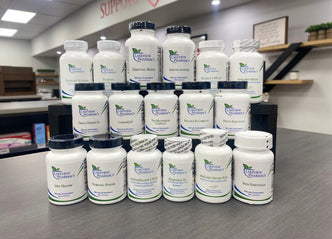Avoid Side Effects and Address Other Issues
It’s well established that metformin is effective in treating type 2 or adult-onset diabetes. The drug is regarded as an essential front-line tool in treating and managing the condition for millions of Americans. With the development of topical metformin cream and transdermal metformin therapy (TMT), many of those who need the medication are also now able to avoid some or all of the side effects associated with the drug.
The side effects associated with metformin usage and how TMT or topical metformin addresses them are common knowledge. But the most prevalent issues that come with taking metformin orally include assorted conditions targeting the gastrointestinal tract such as nausea, diarrhea, bloating, or vomiting. Other gastrointestinal distress, such as flatulence, is also common especially early in treatment.
At least one in three patients prescribed metformin encounter some of these side effects. A 2017 study from the Journal of Research in Pharmacy Practice found that more than half of all patients prescribed metformin have experienced some of the known side effects, which in turn led to more than five percent of patients to suspend, or end, the medicinal treatment altogether.
But TMT, featuring topical metformin cream, dramatically cut back or eliminated those side effects. This topical medication, usually applied to the inside of the wrist or thigh, pushes metformin into the body through the skin where it is absorbed into the bloodstream. The process bypasses the gastrointestinal tract altogether.
In addition to avoiding gastrointestinal side effects, topical metformin often allowed patients to undergo treatment at lower doses and avoid the difficulty of ingesting large pills associated with larger doses. And while these are noteworthy developments, the power of topical metformin cream can also be applied to other medical issues. Let’s examine a few of those other uses here.
Additional Benefits of Topical Metformin Cream
While commonly associated with — and effective in treating — diabetes, there are other established medical uses for topical metformin cream.
Metformin has been used in women’s health care for both polycystic ovarian syndrome (PCOS) and for those with excessive facial hair (hirsutism). Often utilized as an off-label treatment for PCOS, metformin reduces circulating insulin which in turn decreases the concentration of free levels of androgens.
Hirsutism is excessive growth of pigmented hair on the chin or lip area and is often caused by underlying PCOS or other unknown causes. Several studies have provided some evidence that applying a topical metformin cream may inhibit and reduce this hair growth. Hair follicles exposed to excessive insulin levels show a higher growth rate. Follicles in the absence of insulin or at typical levels prematurely entered a non-growing state.
There is also growing evidence that topical metformin cream can help treat other dermatological issues. One study outlined how such treatment can prove beneficial in hormonal acne, hidradenitis suppurativa (HS), and acanthosis nigricans. Recently, systemic usage of topical metformin cream for psoriasis and cutaneous malignancies has also shown promising results. Metformin’s role in improving hyperinsulinemia is proving to provide benefits previously unexplored, and TMT or topical metformin is still in its infancy in terms of potential uses.
Compounding Support for Topical Metformin Cream
Metformin cream is still a relatively new treatment option, for any of the uses discussed above. You likely won’t be prescribed such an ointment or cream by your doctor and it’s not the preferred delivery method of the medication used by pharmaceutical companies. You’ll need a trusted compounding pharmacy to turn your regular metformin prescription into a topical cream.
Compounding is the creation of a pharmaceutical preparation by a licensed pharmacist to meet the unique needs of an individual patient when a commercially available drug does not meet those needs. Compounding pharmacies can customize the strength or dosage of a prescription into a more easily taken form, or reformulate a drug to exclude an unwanted, non-essential ingredient. In metformin’s case, compounding is the process of changing the form of medication for patients who have difficulty swallowing the prescribed tablets/pills or dealing with known side effects of taking it orally.
A good compounding pharmacy will be able to take your existing metformin prescription and translate it into a topical metformin solution that will allow you to more easily adhere to your treatment plan or open up treatment options for additional issues.
Lakeview Pharmacy has served the Racine, Wis. area for nearly half a century in a variety of ways, both old and new. Whether it’s exploring new techniques for applying medications you’ve taken for years, setting up long-term care options, or offering new solutions to old problems, our staff of experienced pharmacists will provide the personal service and attention you need to find your way through a complicated health care landscape.


